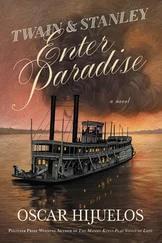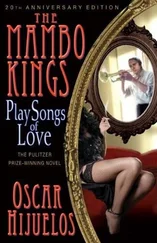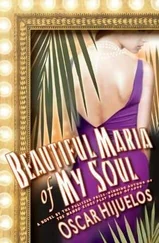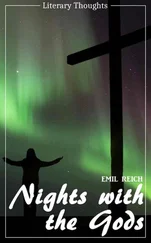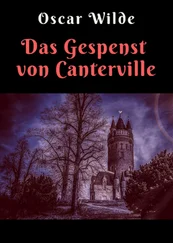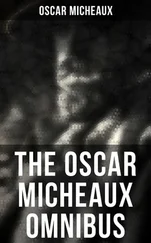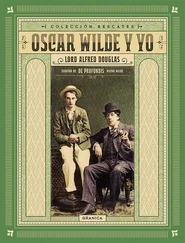Back in Rome, I spent many a morning in the forum, hanging around classicists and developing an interest in archeology, so much so that in the coming years, for some six seasons, I’d devote my summers to digging out trenches and hauling wheelbarrows of fangi e sassi by the Temple of the Vestal Virgins, in the area sacra , an ongoing excavation supervised by the aforementioned Russell Scott. (If you don’t think a place can be haunted, then I suggest you go prowling through the Roman forum at six thirty in the morning, when the very upturned stone and marble columns seem to ooze spirits — mists literally rising from the corners of long-abandoned villas (at least they would for me). In fact, once the word got out that this Hijuelos was a soft touch when it came to digs, I moonlighted on several others, up in Cosa and in Campania to the south. I was so smitten by the notion of seeing the ancient world that I decided to visit Egypt in the winter. I was in Cairo when the army went into revolt and burned down several Giza hotels, among them one not far from where I had stayed. Later, I made it up the Nile to the island temple of Philae where Antinous, Hadrian’s lover, was said to have drowned himself; and although I fell deathly sick from a stomach malady along the way, by my journey’s end, with Karnak and Abu Simbel and other such marvels behind me, I felt, archeologically speaking, gloriously fulfilled.
And yet, at the same time, throughout those touristic travels, as I went jogging along the dusty palm-lined roads by the Nile in the early mornings, or crawled up a narrow shaft into the antechamber of the Great Pyramid, I had a nagging premonition that something sad had taken place back home, a strange and inexplicable feeling that accompanied me back to Rome. And this, unfortunately, came true. On the evening of my return, I walked up a hill toward the Academy’s back gate, where I bumped into one of my favorite fellows, Josefina, a Sardinian princess, who happened to be a classicist. After we had chatted a bit I made my way through the gardens and the villa complex itself. In my room, I sat down on my bed, when, wouldn’t you know it, the telephone rang. It was about ten thirty on a Sunday night, the world so still. One of my old neighborhood friends was calling me from New York.
“I got something bad to tell you,” he said. “Tommy Muller-Thym’s dead.”
“Oh, man — what happened?”
“Well, you know he had some bad stuff going on with his liver, that’s all,” he told me. “Went out alone and blind in a house upstate.”
The details of our reminiscences about him — as a gifted, funny, and super-bright dude who should have had a good life — aside, the loss of him killed both of us, but what could one conclude except that some things “just bees that way,” as my friend put it.
It took me a long time to get over that; and, though I knew he was gone, I brought Tommy’s jive spirit with me, wherever I went. That next summer, when I traveled all across Turkey visiting archeological sites, the most splendid of which, if one should care to know, were that of mystical Efes, where Saint Paul preached in the amphitheater; Sardis, with its collapsed temple to Saturn; the ruins of Pergamum; and, to the east, Nemrut Dag, the fantastically strange mountain tomb of one of Alexander the Great’s descendants, Antiochus I, whose summit — forgive the tourist-guide speak — afforded one an incomparable view of the rolling steppes of Asia, Tommy came along with me. Then, of course, with time, his presence, as with so many memories, faded — though I am glad that he is with me again, as I write these lines down now.

Okay, so you must be wondering what all of the above has to do with the fact that, at the same time, squeezed out here and there, I had been working on my novel about Cesar Castillo, who, as it turned out, had a brother named Nestor; well, the answer is this: absolutely nothing, except in the sense that such travels and interests set free another part of my heart and soul, which, until then, had been almost entirely bottled up. And that, in a phrase, helped me with the writing of it.
Making the Castillo brothers musicians, like my uncle Pedro, I knew they had left Havana in the late 1940s, to pursue the mambo scene in New York City, and that, as with most immigrants, their first years, while coping with a new language, a strange new environment, prejudice, and an inevitable sense of displacement (as well as elation) — the latter of which I often felt myself in Rome — were difficult. They’d have a moment of triumph, which I could never quite figure out — that is, until one afternoon, on a lusciously fecund spring day, when I was sitting in my studio and trying to decide whether to take a walk down to Trastevere or to remain by my desk searching for a solution. For some reason, just as I was about to leave, I began to recall how as a kid watching television with my pop, we delighted in the I Love Lucy show, and not only because of the comedy and give-and-take between Desi Arnaz’s character of Ricky Ricardo, a Cuban nightclub performer in New York, and his endlessly charming but zany American wife, Lucy (a match-up, incidentally, that I have in the decades since seen duplicated countless times), but because of how familiar it seemed to us whenever Ricky’s relatives turned up at his door from Cuba: I’d always wondered about those folks and the lives they had lived. And while I often entertained the notion of writing something about those walk-on characters, it hadn’t yet dawned on me that such an idea could be of use to me in my novel about a former Mambo King looking back on his life. And yet, right then and there, in my studio in Rome, it occurred to me that the brothers, fresh from Havana, had once appeared at Ricky’s door and, as musicians and singers, would perform on the stage of the Tropicana nightclub, as did so many of Ricky’s Cuban friends. Of course, as part of their backstory, set in the real world of the novel, he’d have to discover them somehow, and so, at a moment when I still felt greatly tempted to lose myself in the perfumed warmth of a Roman afternoon, I forced myself to type out the following lines:
One Tuesday night in 1955 the Cuban bandleader and television personality Desi Arnaz walked into the Mambo Nine Club on 58th Street and Eighth Avenue to check out the talent. Someone had told him about two Cuban brothers, Cesar and Nestor Castillo, that they were good singers and songwriters who might have some material for Arnaz to use on his show….
The song they perform that night is one that Nestor Castillo had written for a love he’d left behind in Cuba, “Beautiful María of My Soul”; in some ways it was strictly a product of my life in Rome, and of my closet religiosity, for the name María first came to mind, in terms of that novel, on the Good Friday evening before Easter of 1986, when I had gone to the Colosseum to watch, among crowds of Romans, Pope John Paul II preside over the procession and ritual known as “La Via Crucis,” or the stations of the cross. Through a sound system that thundered, echoing through the farthest recesses of the ancient center, an Italian cardinal with one of the most resonant and deeply rich voices I’d ever heard, began to recite the story of Jesus’s passion and death. Now and then, the name Maria would burst through the narrative—
Allora, Maria, la donna di Gerusalemme. .
Gesu, il Figlio di Maria. .
Cristo Gesu, nato dall Vergine Maria. .
Santa Maria, Vergine del silenzio e di misteriosa pace. .
Il cuore in piena per l’empatía con la tua morte e il tacito dolore di Maria. . —all the while enchanting me in such a manner that I allowed that name to roll over and over again in my mind, until at a certain moment, long after I’d left that wonderful processional, in the middle of the night, I shot up in bed, not from any bad dreams but from something that came to me as if out of the Roman/Havana air, a simple line, “La Bella María de mi Alma,” which I just had to scribble down lest I forget that subconscious rumination.
Читать дальше



